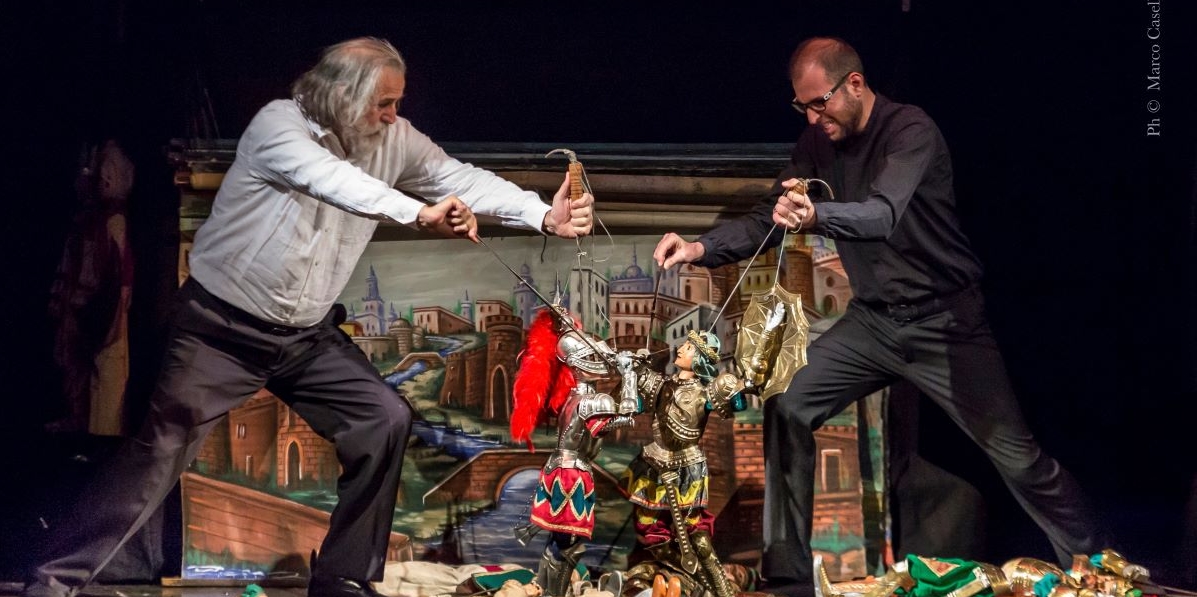The myth of Orlando (Roland) has captured the imagination from as far back as the Middle Ages. The plays centres on Roland as a boy – called Orlandino (little Roland) – and his youthful energy as he faces life head on. The play reminds us of what it was like to be a young child, surrounded by the adventures of life, trying to make sense of the world.
We learn that Orlandino was born in a cave where he has been residing with his mother amongst the woods for the past seven years. His education comes not from schools but from his day-to-day mischief in the wilderness. In one episode, Orlandino gathers vegetables for his mother in the forest and mistakenly kills a snake, believing it to be a fish. In another episode, the lively and curious child wanders off into the main town where he soon begins to learn right from wrong. Before long, he befriends a group of young villagers who invite him to take part in a tempestuous conflict between the rich and poor.
His mother Berta, protective of her young son, worries that Orlandino will reveal his identity: Berta had been banished from the lands following her elopement with Roland’s father, (Milone) but fate has it that Roland makes his way into the royal palace and accidentally reveals his family origins to none other than Charles the Great, Berta’s brother. Following the revelation, the Roman Emperor makes peace with his sister, promising to find Roland’s father as a peace-offering.
Though this particular show is based a simple tale, the dynamics are far from simple. All the voices of the different characters – of different ages and genders – are generated through the main puparo, in this case Giacomo Cuticchio who is the son of Palermo’s most famous maestro, Mimmo Cuticchio. Moreover, all the pupi have been hand-crafted by the Cuticchio family: the family comes from a long line of pupari, which started with Giacomo Cuticchio when he first opened his own theatre in 1933.
Unlike the classical European puppet theatre, which is moved by long strings of rope, the Sicilian puppets are manoeuvred by two iron rods, one of which is attached to the hand of the puppet and the other passes through the inside of its head. For the puppet to unsheathe its sword, there are four strings that allow move its left hand and raise the visor of its helmet. Each puppet is made up of nine parts – from torso to hands, fists, legs and so on. It is rather extraordinarily gripping to watch a live performance.
Though the show is in Italian, no-one is left lost in translation. The opera dei pupi tradition is registered among the Intangible Heritage of Humanity by UNESCO. Because the artform derives from an oral narrative tradition – with the stories recounted passed on from one generation of pupari (puppet masters) to the next – the action on stage is very physical and therefore easy to follow. Well worth a watch when next visiting Sicily.
For more information, please see: https://www.figlidartecuticchio.com/

